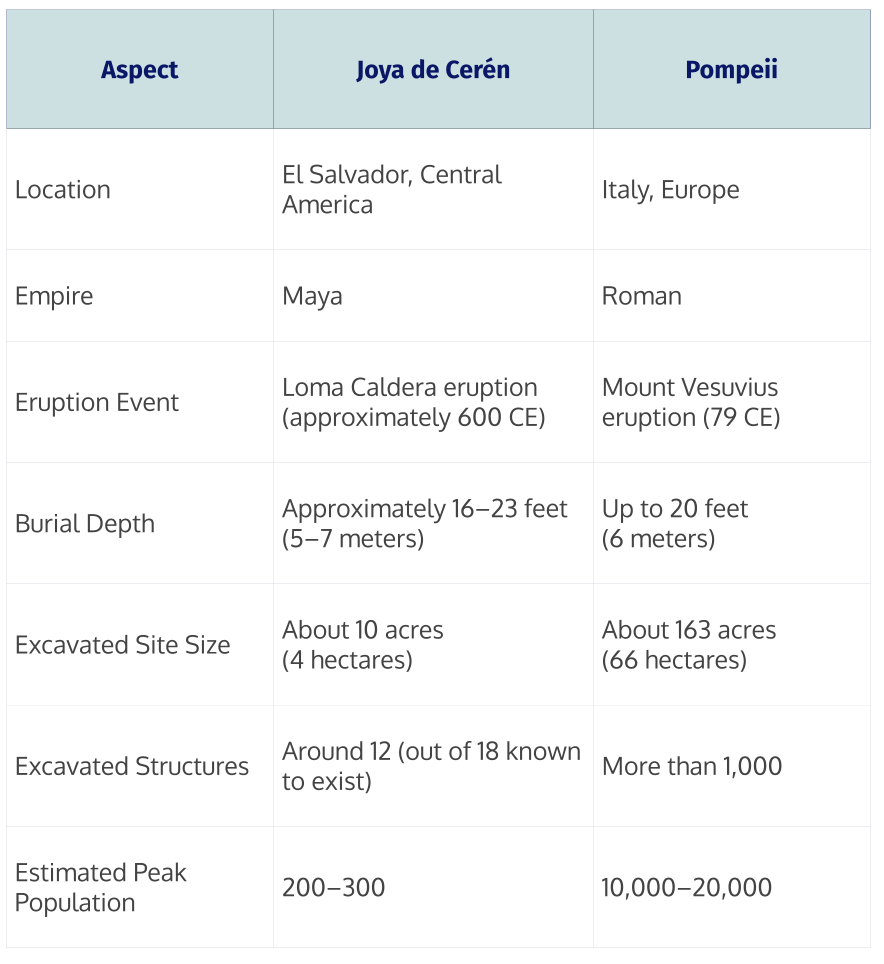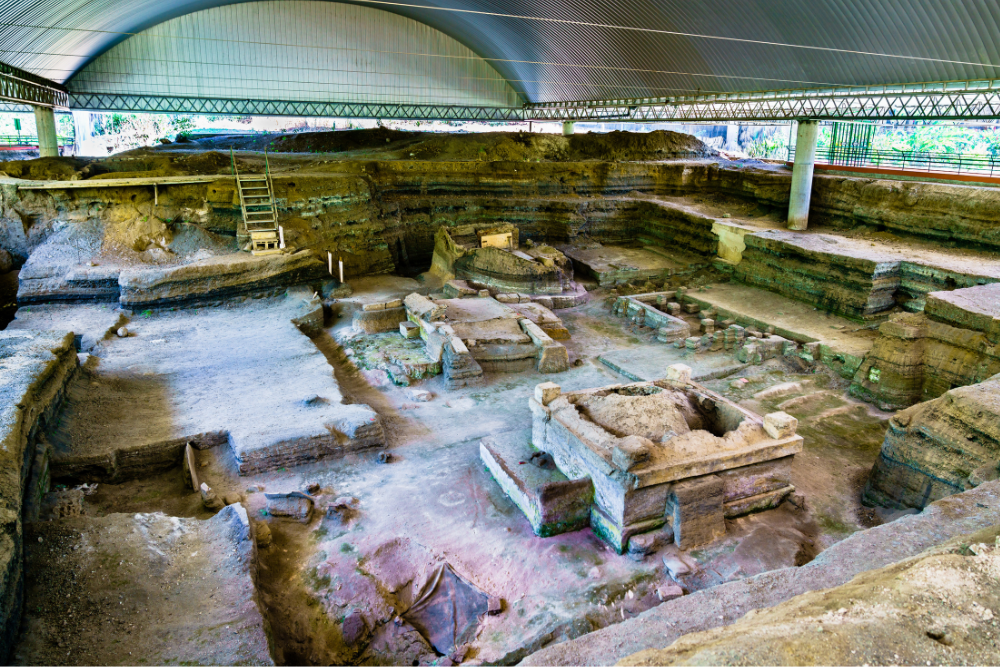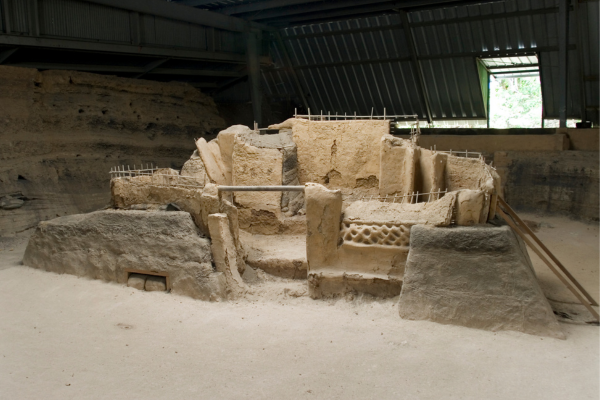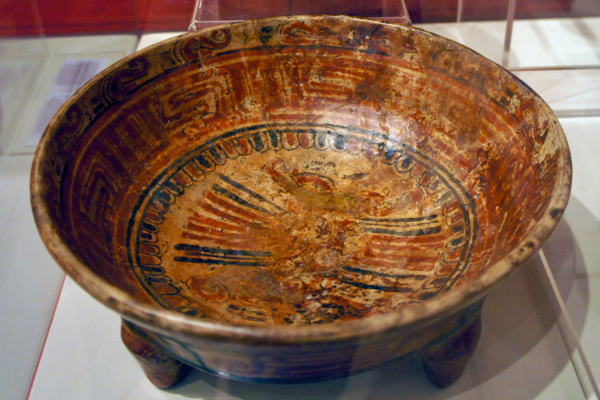EL SALVADOR
Pompeii of the Americas
By Varun Gupta, Evan Song, Thierry Lawrence, Davis Church, Joao Gasparian, Roshan Gopal, Shaye Kirman, Jagger Stachtiaris, Derek Tang, and Chance Nalley
New York City, NY, United States
Joya de Cerén, often hailed as the Pompeii of the Americas, is an ancient Maya village in El Salvador that was deemed a UNESCO World Heritage Site in 1993. Located in one of the country’s most picturesque valleys, it was home to approximately 200 to 300 residents at its peak.
Around 600 CE Joya de Cerén was buried under layers of volcanic ash from the Loma Caldera eruption. Interestingly, the village wasn’t discovered by archaeologists. A construction worker stumbled upon it in 1976 while bulldozing the land for agricultural use. Let’s compare Joya de Cerén, the Pompeii of the Americas, to the actual Pompeii.
 Preserved Past
Preserved Past
Joya de Cerén, buried beneath as much as 23 feet (seven meters) of volcanic ash for over 13 centuries, provides a remarkable glimpse into the daily life of a Maya farming community. Unlike other Maya sites characterized by grand urban structures like temples and palaces, Joya de Cerén offers a unique treasure trove for studying everyday activities. Archaeologists have unearthed homes, kitchens, storehouses, and cultivated fields. Thousands of artifacts, from woven baskets to jade axes, have been unearthed and cataloged.
Despite the impressive preservation of the village, no human remains from the time of the eruption have been discovered. Scientists speculate that an earthquake preceding the volcanic event may have prompted residents to evacuate.

Designed for Life
The village’s layout suggests a well-planned and orderly community, with residential areas distinct from communal and agricultural spaces. It included a religious building that contained decorated vessels and a deer headdress. Archaeologists believe the residents were participating in a spiritual ceremony there when they decided to evacuate.
The fields surrounding Joya de Cerén underscore the vital role of agriculture in supporting the community’s livelihood, with a strong emphasis on food production and storage. Villagers used techniques such as terraces and irrigation systems to cultivate crops such as corn, beans, squash, and manioc.
Waves of Change
After the Loma Caldera eruption, the area saw two population influxes:
- the Pipil of central Mexico (900–1100 CE)
- the Spanish (starting in the 16th century)
Spanish colonizers, facing the scarcity of accessible mineral resources in the region, turned to agriculture as their primary means of economic gain. They relied heavily on Indigenous labor and knowledge to exploit the fertile land. Subsequently, a new culturally distinct group, known as mestizos, developed. The majority of El Salvador’s population today, mestizo individuals generally claim both Spanish and Indigenous ancestry.
Modern-Day Appeal
History buffs and curious tourists alike are flocking to Joya de Cerén, drawn by the opportunity to glimpse the past. The site has seen enhancements aimed at both conservation and visitor satisfaction. Shelters and regular monitoring safeguard the excavations for future generations to explore. Meanwhile, ongoing archaeological projects promise to peel back more layers of history.
Have a suggestion for this story? We’d love for you to submit it!


Blank
Blank
Math Resources
Sample Problems for Elementary School:
- Approximately how long ago was Joya de Cerén buried? (Grade 2)
- How many years passed between the founding of Joya de Cerén and its recent discovery? (Grade 2)
- Rounding to the nearest 0.5, about how many acres are in a hectare? (Grades 3–4)
- How many square decameters per capita were there in Joya de Cerén? (Grade 5)
Sample Problems for Middle School:
- Assuming 4,000 people visit Joya de Cerén each week, how many visitors total have there been to Joya de Cerén since it became a UNESCO World Heritage site? (Grade 6)
- During its peak occupancy, how many more inhabitants could the village support so that there would be one inhabitant per square meter accounting for the space taken up by the actual village and the surrounding agricultural grounds? (Grade 6)
Sample Problems for High School:
- What are the potential dimensions Joya de Cerén could have been while keeping the same area for all of the following shapes: circle, triangle, rectangle, pentagon, hexagon? (Grade 9)
- All the village’s buildings are oriented 30 degrees east of north and sit on earthen platforms. If the entire village is represented with an ellipse with vertices (3,0) and (0,2), what is the equation of this ellipse when rotated 30 degrees clockwise about the origin? (Grade 10)
- Let’s assume that the site is 100 percent preserved right now. If the preservation rate of Joya de Cerén deteriorates by 0.1 percent every year, approximately how many years would it take to reach 50 percent preservation? (Grade 11)
Social Justice Questions
- Research another city or village that once flourished but was buried under debris and required excavation. Compare and contrast this place with Joya de Cerén and Pompeii.
- In what ways does the archaeological site of Joya de Cerén challenge conventional notions of what constitutes an “advanced civilization”? How does the preservation of everyday life at Joya de Cerén provide insights into the ingenuity and resourcefulness of its ancient inhabitants, inviting us to reconsider our perspectives on societal advancement?
- Research what methods are being used to ensure maximum preservation. Why is it important to preserve Joya de Cerén?
Explore Further
- UNESCO World Heritage Site’s webpage about Joya de Cerén
- Details from El Salvador’s National Foundation of Archaeology
- More information about Joya de Cerén as a Maya ruin
- Video with historical analysis
Share Your Story
Write your own Global Math Story and send it to us!
Sorry, the comment form is closed at this time.